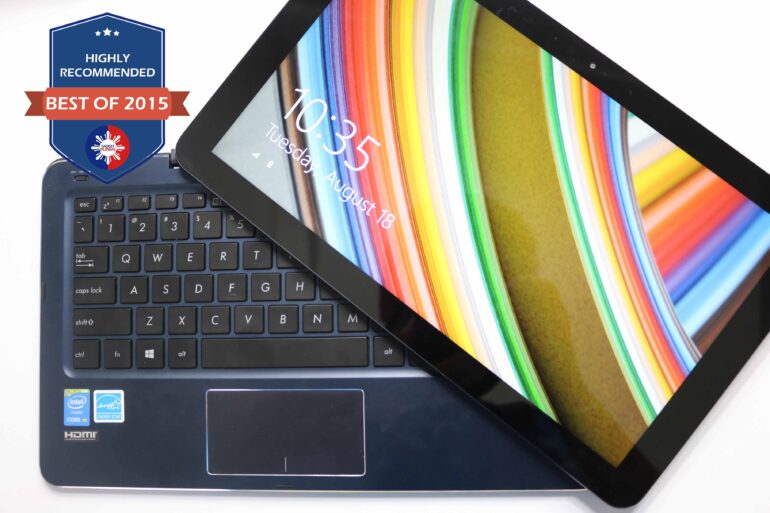[su_spoiler title=”Table of Contents”]
[/su_spoiler]
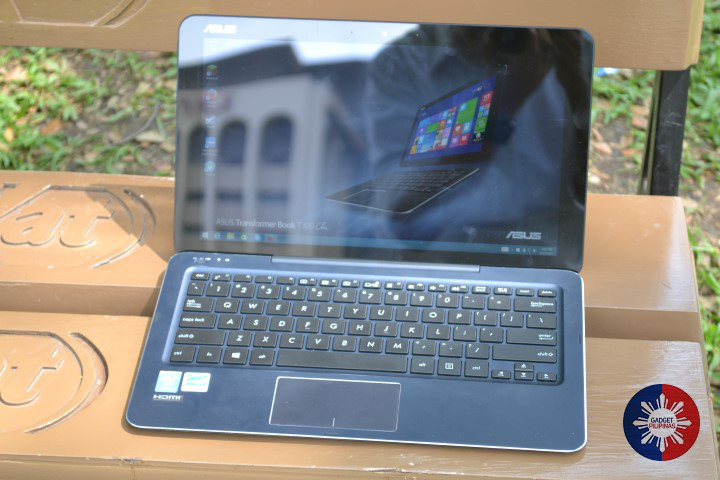
Asus has quite rightly made a name for themselves by producing a series of hybrid laptop computers that can go from being tablets in one moment to being full-sized notebook PCs in another. The Taiwan-based company has kept this line of theirs — called Transformer Book — alive and the current flagship model is a 12.5-inch beauty called the T300 Chi.
When it was first introduced to the market, Asus went with the tag line, “Our Chi is lighter than Air.” But at what cost? That’s the question that we sought to find the answer to while testing the device for this review.
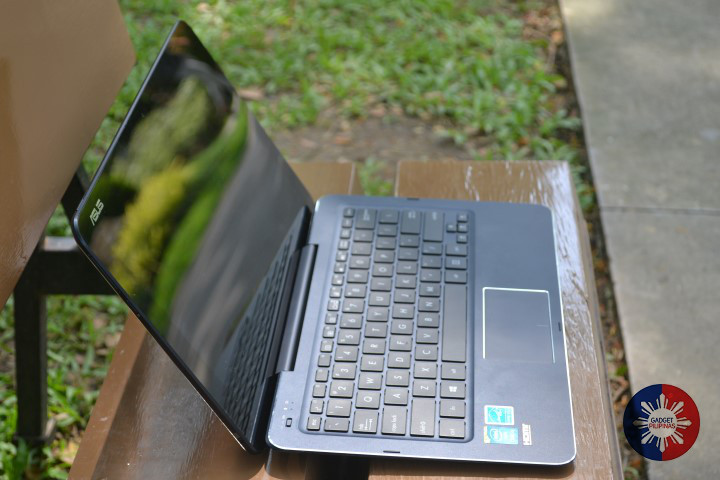
The T300 Chi is, in a manner of speaking, a full Windows laptop with the latest version of the Microsoft OS pre-installed. In this case, it’s Windows 8.1. If you saw it sitting on top of a table across the room, you wouldn’t be wrong to think to yourself, “Now that is a nice looking notebook PC, right there.” But it’s really not just another Windows notebook.
The Asus Transformer Book T300 Chi is the thinnest and lightest device of its kind in the entire world.
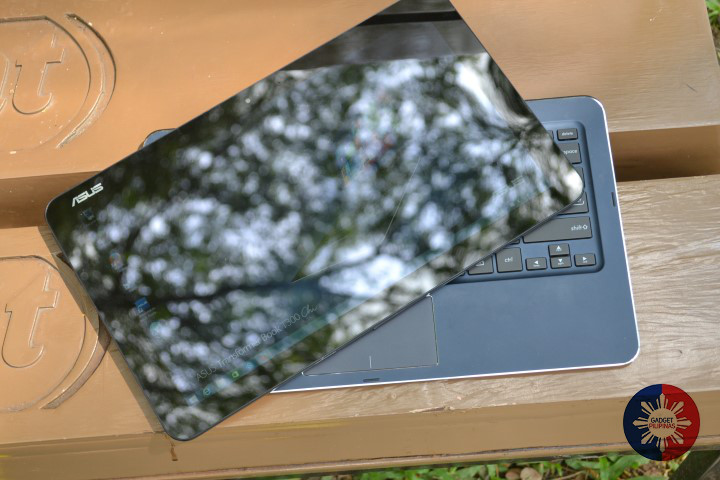
You see, the Transformer T300 Chi’s screen can be detached from its keyboard dock and it can be used simply as a 12.5-inch tablet with Windows on it. As a tablet, it’s actually the thinnest 13-incher that’s out in stores worldwide, as it measures only 0.3 inches at its thinnest point. And it’s also a good bit lighter than some of its closest competitors (the Microsoft Surface Pro 3 comes to mind).
But with all of that said, there’s something about the T300 Chi that feels kind of… off. Thin as it may be, the 12.5-inch screen has lead to a sort of stretched out tablet body. And the result is a device that feels too unwieldy at times, and it gets in the way when doing even the most simple tasks in tablet mode.
Asus also decided for some reason to have the Windows button where one might expect the power button to be — on the left side of the screen, right below the volume rocker. The actual power button is instead located at the top of the tablet, near the top left corner of the screen.
Coming from 10-inch Windows tablets that tended to have their Windows buttons at the bottom, right at the center below the screen, we had some difficulty adjusting to the T300 Chi’s hardware button setup. Also, it felt too laborsome to even try and just press the buttons in the first place because of how wide the device is. In the end, we settled for using only the on-screen keys to do things whenever we could.
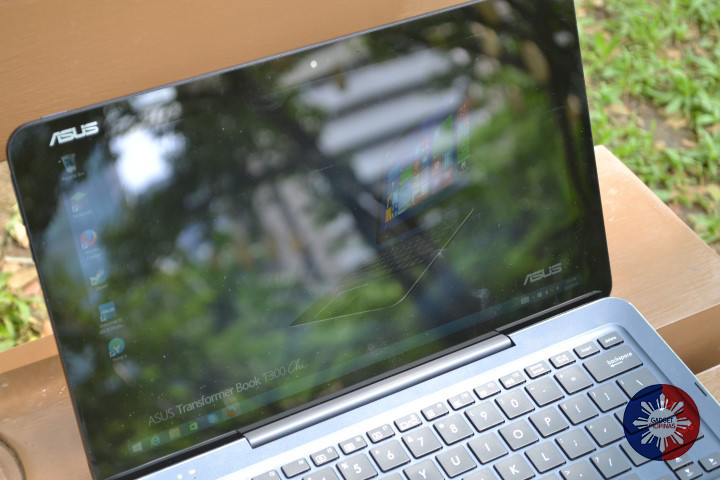
And speaking of the screen, it may be one of the most gorgeous 13-inch touchscreen displays that we’ve ever laid our eyes on. As long as we kept the T300 Chi indoors, that is. The screen on the T300 Chi is topped with what looks like edge-to-edge glass, and while visually it certainly looks stunning, it adds a small problem when trying to do stuff outdoors.
There’s simply too much glare on the screen because of the glass outer layer. Imagine the glare you get from a typical 5-inch phone. Now multiply that amount of glare by about 2.5. That’s a lot to take in, really. We tried setting the brightness all the way up to the maximum to make the T300 Chi usable, and it worked. But it’s really not the optimal setup.
In places where the lighting isn’t as harsh as the afternoon sun, the T300 Chi easily shines.
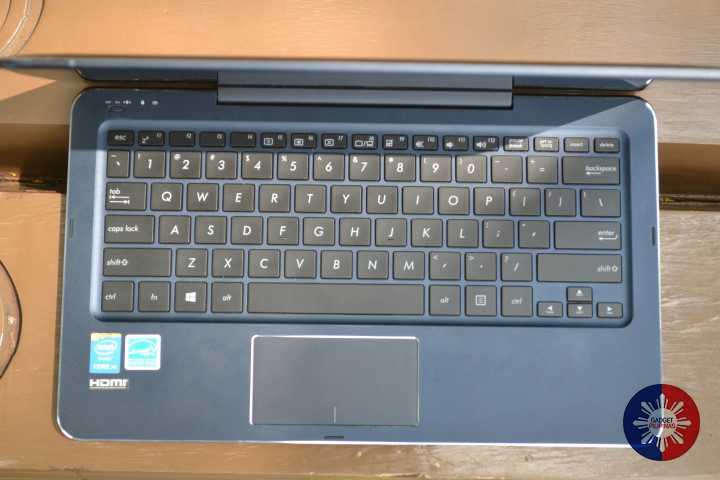
As a tablet, the T300 Chi worked well with its pre-installed OS, Windows 8.1. The base model comes with a Full HD (1920×1080 pixel resolution) display panel, has a built-in speaker grille, and a few connectivity ports. The port selection is, unfortunately, not that great.
Since Asus made it no secret that this device is inspired by “air” — and it just so happens that the word “Chi” actually means “air” in Mandarin — perhaps they want you to be reliant on cloud storage when you use the T300 Chi. But we have to say, we’re not too happy about the general lack of expansion options, whether in terms of storage or otherwise.
With the T300 Chi, you get a micro USB 3.0 port which can be used for data transfer and the occasional micro USB accessory. And other than that, there’s micro HDMI, a 3.5mm headphone jack, and… absolutely nothing else. You don’t get much in terms of ports with the T300 Chi.
In fact, even if you factor in the above-mentioned keyboard dock, you won’t get any extra ports or features (apart from a full-sized keyboard). The keyboard is just like a Slave to the T300 Chi’s Master. It connects to the tablet via Bluetooth wireless. And yes, you have to charge it separately.
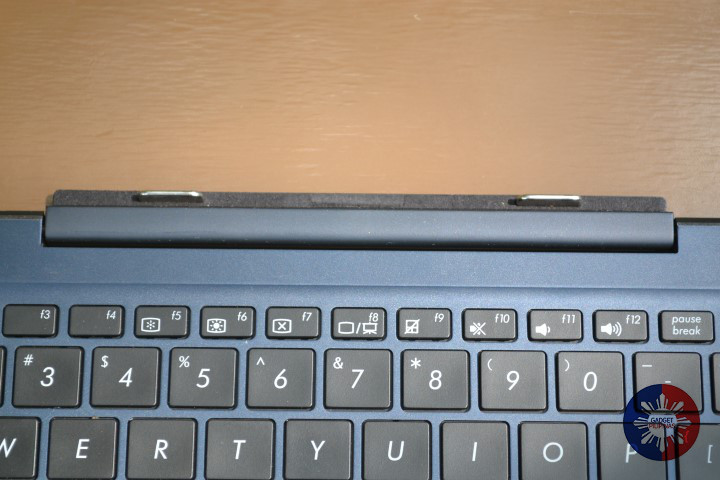
To be fair to Asus, the keyboard dock, in and of itself, is pretty convenient. We mentioned earlier that the T300 Chi can be a bit too unwieldy when used in tablet mode because of how wide it is. So forget typing out long emails or Word documents on it with the Windows 8.1 on-screen keyboard. But with the keyboard dock, it’s just like being on a full-sized laptop with a rather sexy and comfortable chiclet keyboard.
The tablet attaches to the keyboard via a magnetic latch, which is secure enough to not let screen fall to the ground even if you held the T300 Chi upside down. It may not allow for the best viewing angles, but it surely gets the job done of transforming the T300 Chi into notebook mode. The T300 Chi practically looks seamless when it is in use.
And the keys are not that bad either. They offer plenty of travel and a fair amount of tactile feedback, so typing on them isn’t tiresome. Of course, the keyboard layout is compact as the T300 Chi is an ultraportable, so there are some limitations that you will be forced to live with. One example, there are no dedicated Function keys at the top row. And there are no dedicated Page Up, Page Down, Home, or End buttons either.
What we’re trying to say with all of this missing button and limitations talk is that you’re going to have to take some time to adjust to using the T300 Chi if you ever spring for one. We know we did. And it seemed like we had to make some adjustments in our typing every time we picked it up for use.
With truly regular use, it should be easy to get the hang of it. Even the built-in trackpad, which we felt could be a hit or miss, might be something that you’ll get used to. The one thing that we could never really be happy with getting used to was the lack of ports, even on the keyboard dock itself.
It may sound preposterous, but there really are no extra ports on the T300 Chi keyboard dock. No full-size USB port, no SD card slot, nothing. There’s a micro USB port on one side, but it’s actually used to charge the keyboard. Remember, it’s wireless and connects via Bluetooth.
It’s worth noting here that there’s no extra battery in the keyboard dock. It baffles us why Asus took away one of the best features in the original Transformer Books. Especially since the tablet’s battery is less than stellar. More on that later.
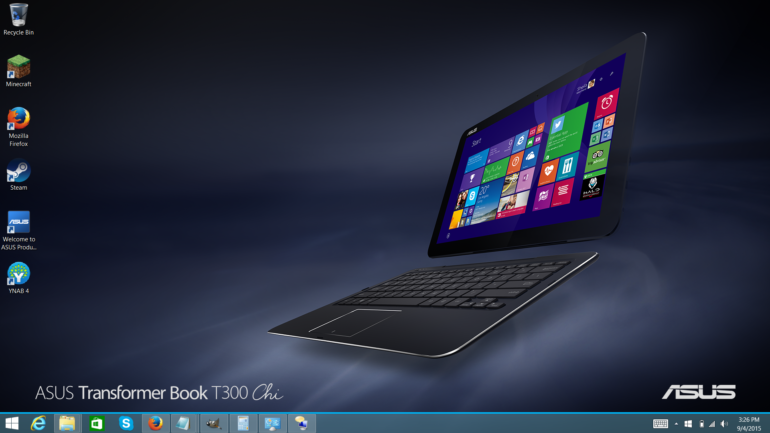
We’ve been banging on about Windows 8.1 on the T300 Chi for a good part of this review, and it works well as a pre-installed OS, for the most part. And it can be upgrade to Windows 10 for free, at that.
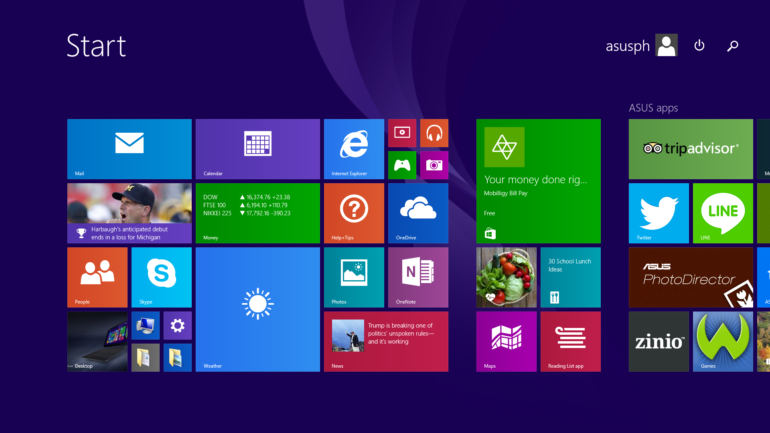
Asus hasn’t changed the OS much at all, aside from adding some extra Windows apps. They’re mostly utility apps, but third-party apps are present as well. There’s TripAdvisor, LINE, twitter, and Zinio, for instance. And there’s even a free 30-day trial of McAfee security software.
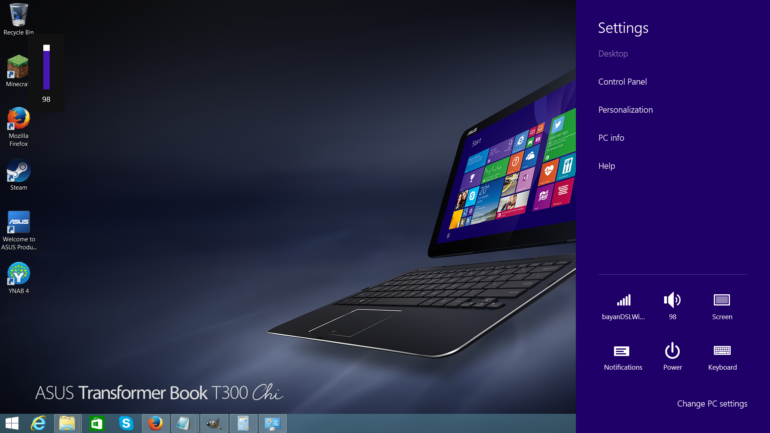
If you’re familiar with Windows 8.1, then you won’t run into any learning curves when using the T300 Chi, software-wise. It works exactly like any Windows tablet PC. Its touchscreen display supports up to 10 separate touch points so multi-touch gestures are not a problem.
What’s more, the screen actually comes with an active digitizer, so it can recognize 256 levels of pressure sensitivity, something that you would appreciate greatly if you’re looking to use stylus pen input on the large 12.5-inch canvas of a screen.
Overall, we don’t have any real complaints about the software. The free trial of McAfee security software becomes a bit annoying with its hourly reminders to purchase a copy after the expiration date, but that’s pretty much it. We only really hit some snags when it came to the hardware.
The T300 Chi runs on a low-power Intel Core M processor with 8GB of DDR3 RAM. It also has 120GB of SSD storage, by the way, and a 32Wh, 4120mAh battery. So how does it all come together?
With typical home or office computing tasks, like writing documents, playing music, checking emails, and browsing the Web, it performs swimmingly. In synthetic benchmark tests, its performance is on par with many ultraportables of today. It’s actually using the exact same processor configuration as many of its direct competitors.
When it comes to playing games or streaming online music or movies, the T300 Chi performs better than expected. There’s only one issue that should be brought up here. And that is the fact that it can get hot on the back with as little as 30 minutes of continuous use, even if the screen is turned off.
We’re sure it’s a combination of Core M using passive cooling and certain tasks being more resource intensive, but we really didn’t expect a device as thin as the T300 Chi to get as hot as it tended to be so quickly.
And speaking of continuous use, we were able to get around 6-7 hours of non-stop use with the brightness set at about 30%, volume at 50%, and streaming Spotify while doing various office-type tasks. Otherwise, it can last for about 3-4 days before you need to recharge it if you’re only going to use it for up to a couple of hours in one sitting.
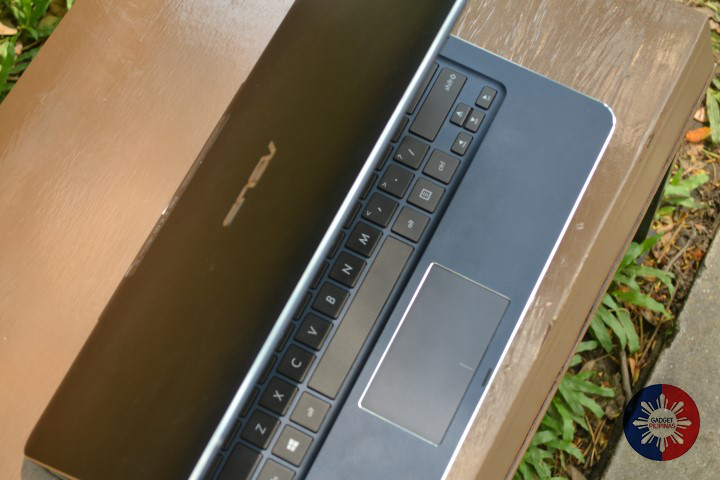
With the T300 Chi, Asus set out to make the thinnest and lightest 13-inch tablet PC with Windows on it. And you know what? They succeeded. If that’s the kind of hybrid computer that you’re looking for, then go right ahead, cop it as it’s truly one of a kind in today’s world.
However, be aware that you’ll be making some sacrifices to be able to carry this symbol of one company’s dominance in a greatly undeserved market. Personally, we feel that Asus could have ended up with the perfect convertible notebook PC if it hadn’t cut so many corners. And truthfully, this wouldn’t matter much at all if the price of the T300 Chi wasn’t so high for what it actually brought to the table.
Have some proper display output and connectivity ports on the tablet and keyboard. Pack an extra battery in there as well. For now, we’ll have to say that until the next model rolls around, this one will have to do for those who don’t consider the lack of one or more of the above items to be a dealbreaker.
